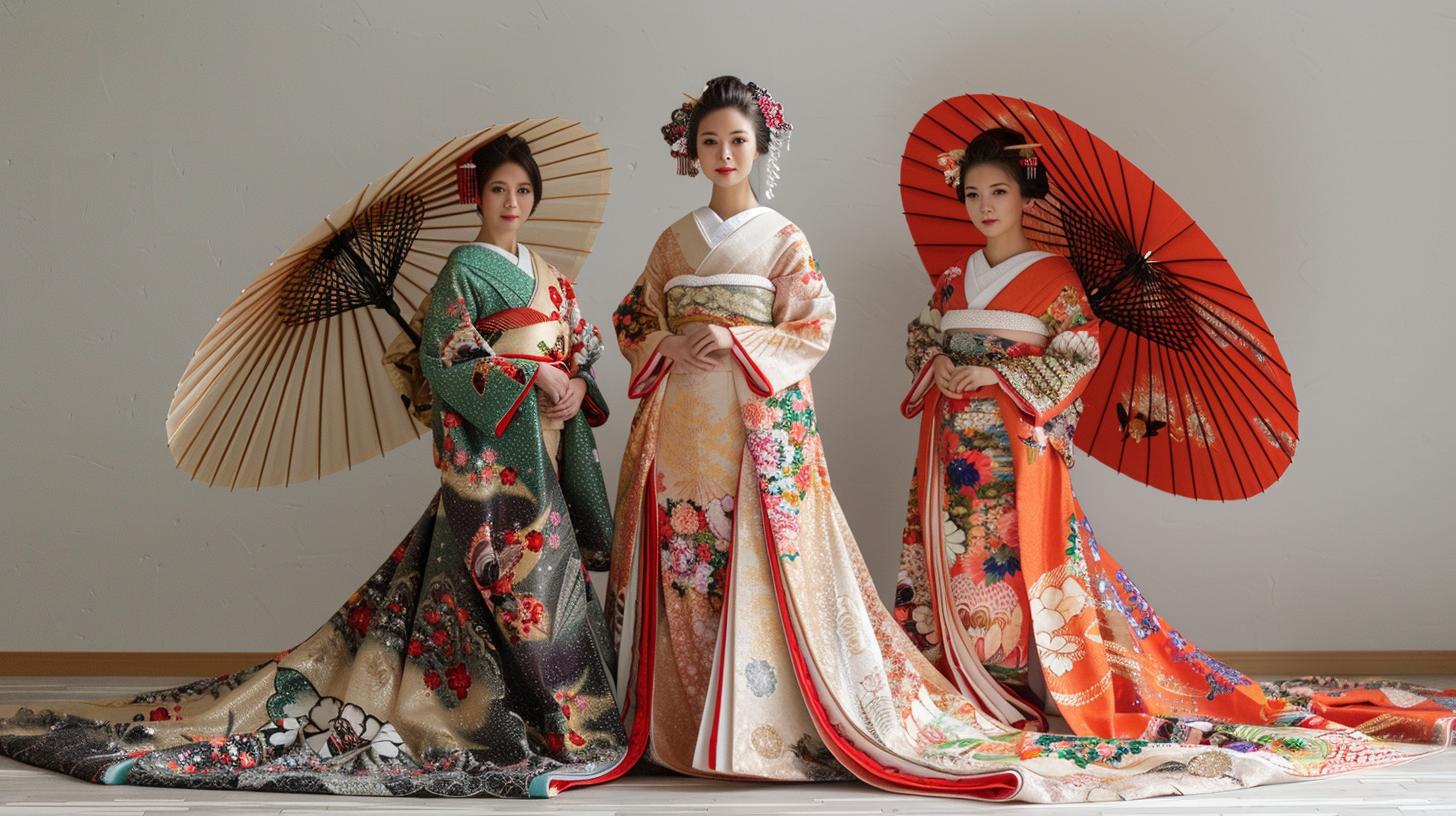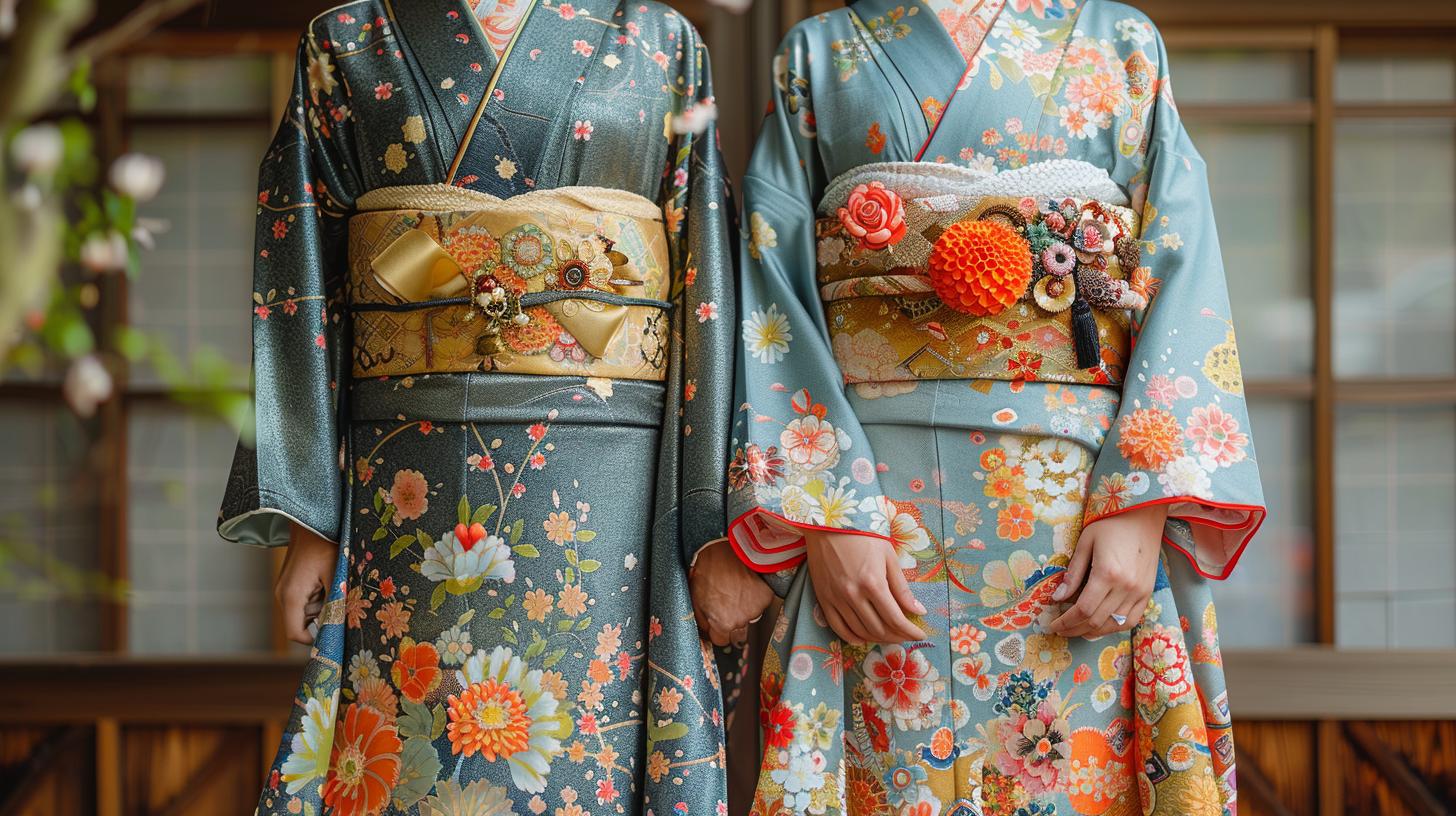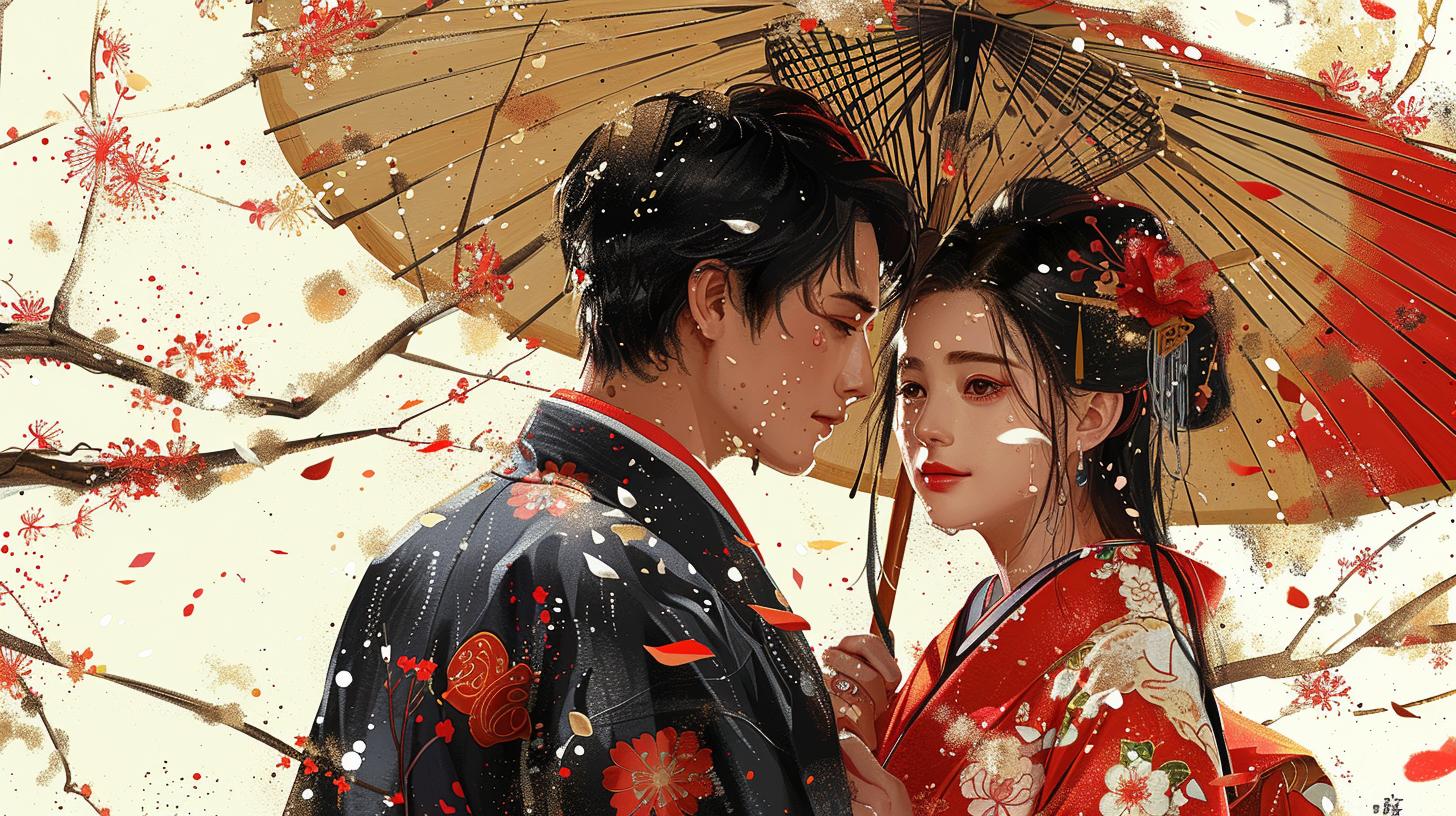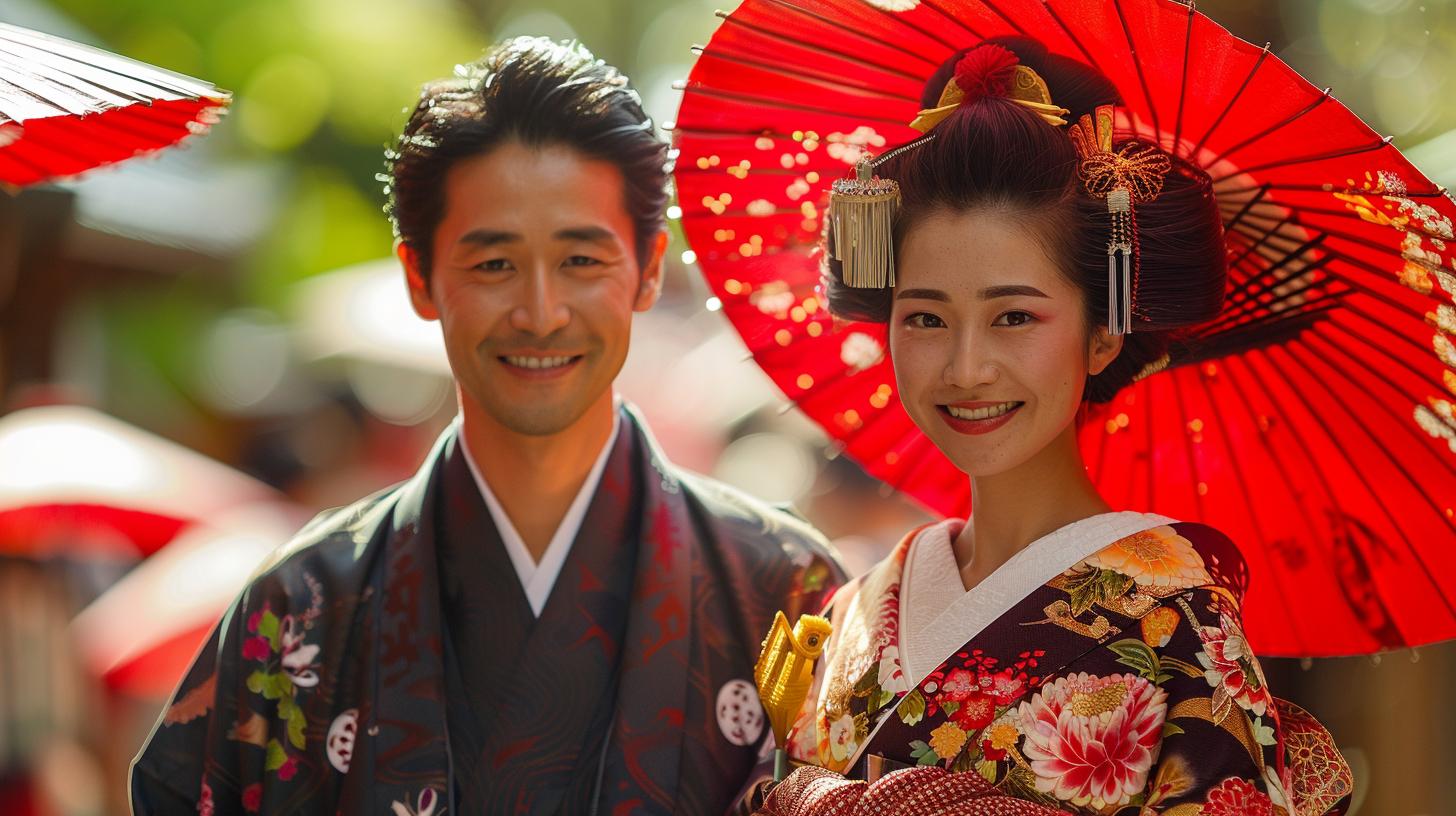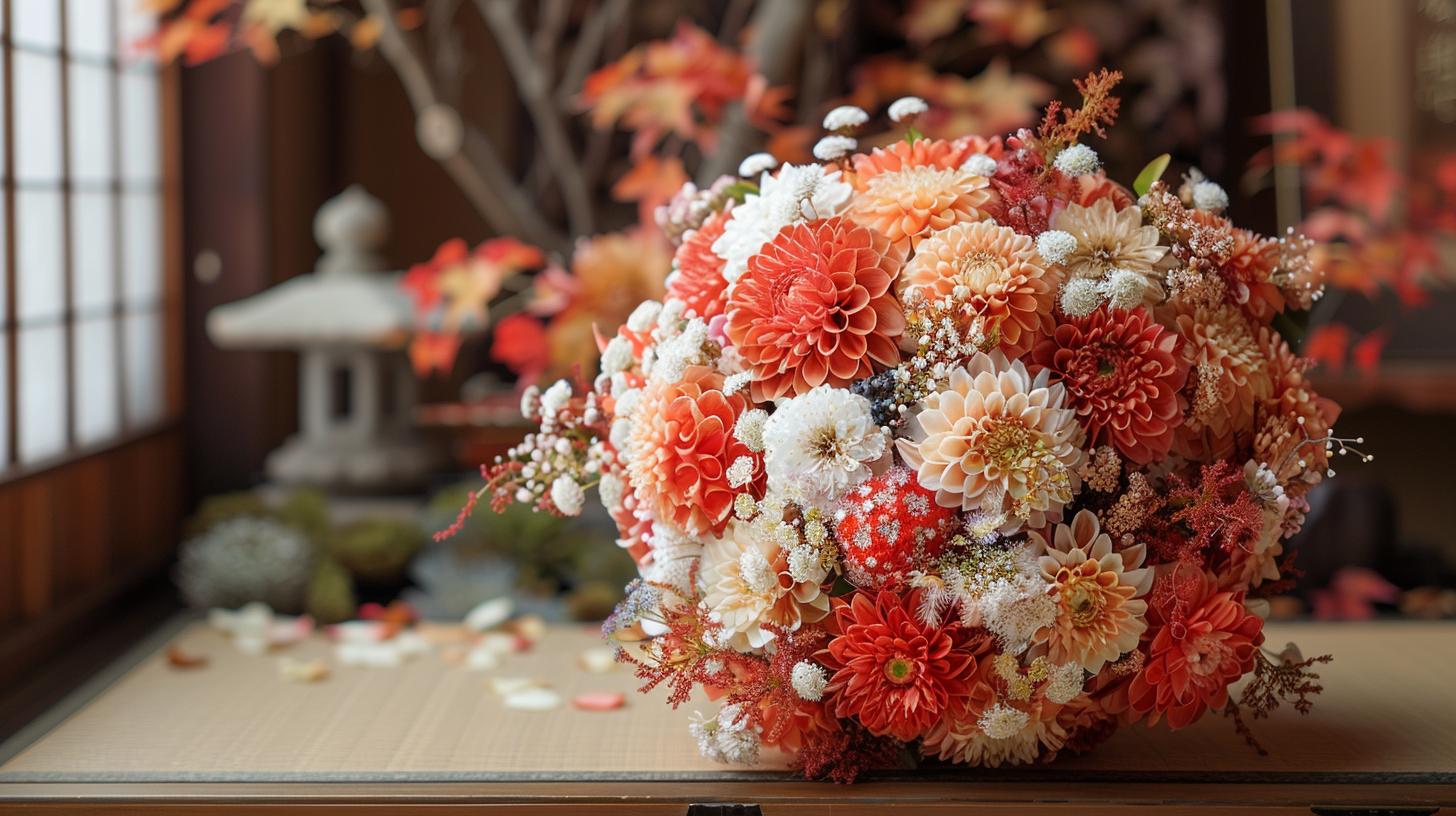Traditional Japanese Wedding: Exploring Ancient Traditions and Modern Influences
Traditional Japanese weddings blend ancient traditions with modern influences. From the intricate kimonos worn by the bride and groom to the symbolic sake ceremony, these weddings are rich in cultural significance.
Planning a traditional Japanese wedding involves selecting auspicious dates, pre-wedding rituals like formal family dinners, and choosing the perfect venue. The ceremony, often held at a Shinto shrine, is followed by formal banquet receptions and informal celebrations.
Traditional Japanese weddings also feature unique gift-giving customs, such as the goshugi tradition.
List of Japanese wedding tips and advices
Unique Elements of Traditional Japanese Wedding
Traditional Japanese weddings are known for their unique elements that blend ancient customs and modern influences seamlessly. From the intricate Japanese wedding attire to the symbolic traditional wedding rituals, each aspect of a traditional Japanese wedding holds special significance.
Japanese Wedding Attire
One of the most striking aspects of a traditional Japanese wedding is the attire worn by the bride and groom. The kimono plays a central role in these weddings, with the bride typically wearing a white kimono known as shiromuku or a colorful kimono called iro-uchikake.
The groom, on the other hand, dons a traditional five-layered kimono that exudes elegance and sophistication.
Kimono Varieties
- The shiromuku kimono is a symbol of purity and is often worn for Shinto ceremonies.
- The iro-uchikake kimono is adorned with vibrant colors and intricate designs, making it a standout choice for the bride.
Traditional Wedding Rituals
Traditional Japanese weddings are steeped in rituals that have been passed down through generations.
One of the most important rituals is the sake ceremony, known as san san ku do, where the couple and their families partake in a solemn exchange of sake to symbolize their union.
Sake Ceremony
The sake ceremony holds deep cultural significance and represents the blending of two families as they come together to celebrate the couple’s marriage. This ritual is a time-honored tradition that highlights the importance of unity and harmony in a Japanese wedding.
Planning a Traditional Japanese Wedding
Choosing the Date
When planning a traditional Japanese wedding, one of the first steps is selecting an auspicious date. Couples often consult the rokuyo calendar to ensure they choose a fortunate day for their ceremony.
This decision is significant as it sets the tone for the entire celebration and is believed to influence the couple’s future together.
Pre-Wedding Traditions
Before the big day, couples partake in pre-wedding rituals that honor tradition and family. A formal family dinner is commonly held, providing an opportunity for both sets of parents to meet and establish connections.
This gathering symbolizes the blending of two families and marks the start of the wedding festivities.
Formal Family Dinner
The formal family dinner is a time-honored tradition that allows the couple’s parents to formally meet and bond before the wedding day. This intimate gathering fosters unity and strengthens familial ties, setting a harmonious tone for the upcoming nuptials.
Wedding Venue Selection
Choosing the perfect venue for a traditional Japanese wedding is crucial to creating a memorable and meaningful experience. Couples often opt for a Shinto shrine, where they can partake in the sacred ceremony surrounded by nature and spiritual significance.
The venue sets the stage for the union of two souls and the beginning of a new chapter.
The Ceremony and Reception
Traditional Japanese weddings culminate in a beautiful ceremony and reception that blend cultural customs with modern celebrations.
Shinto Ceremony Details
The Shinto ceremony is a sacred ritual that takes place in a serene setting, often at a shrine, where the couple offers prayers and exchanges vows.
Shinzenshiki Ritual
The highlight of the Shinto ceremony is the Shinzenshiki ritual, where the couple makes offerings to the gods and receives blessings for a harmonious marriage.
Formal Banquet Reception
After the ceremony, guests gather for a formal banquet reception filled with elegant decor, traditional music, and a lavish feast.
Nijikai Celebration
Following the formal reception, the Nijikai celebration provides a more relaxed atmosphere for guests to mingle, toast the newlyweds, and enjoy the festivities.
Traditional Japanese Wedding Gifts
The exchange of gifts is an integral part of traditional Japanese weddings. The goshugi tradition involves presenting monetary gifts to the newlyweds as a symbol of good luck and best wishes for their future together.
Goshugi Tradition
The goshugi, or monetary gift, is typically presented to the couple in a special envelope during the wedding reception. Guests carefully select the amount of money to give, with the number chosen often ending in an odd digit to prevent splitting the gift evenly.
Gift Exchange Etiquette
When presenting the goshugi, guests should use both hands as a sign of respect and offer the gift with a bow. The couple receives the gifts graciously and expresses their gratitude to each guest individually for their generous contribution.

